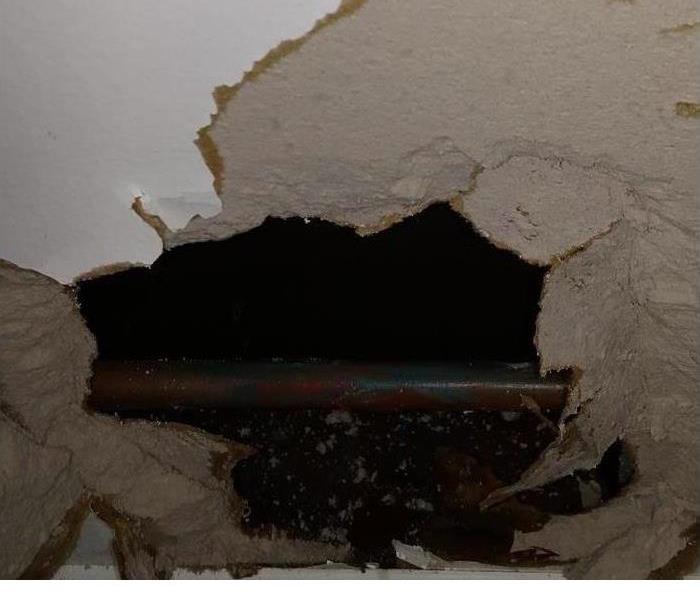What To Do During a Severe Storm
8/31/2020 (Permalink)
What To Do During a Severe Storm
- If you are indoors, stay away from windows, doors and fireplaces.
- If you are advised by officials to evacuate, do so. Do not hesitate you can make it worse for you and your family.
- You can use a cellular telephone during a severe storm, but do not use a land-line telephone.
- If you are in a car, stop the car away from trees or power lines that might fall on you.
What to do during storm weather conditions
Blizzards
- In wide-open areas, visibility can be virtually zero during heavy blowing snow or a blizzard. You can easily lose your way. If a blizzard strikes, do not try to walk to another building unless there is a rope to guide you or something you can follow.
- Try to travel only during the day and have someone in the car with you.
- When a storm hits, it is best to stay indoors. If you have to go out, make sure you are dressed warm. Your jacket should have a hood. Wear mittens - they are warmer than gloves - and a hat, as large portion of body heat is lost through the head.
- If your car gets stuck in a blizzard or snowstorm, remain calm and stay in your car. Allow fresh air in your car by opening the window slightly on the sheltered side - away from the wind. You can run the car engine about 10 minutes every half-hour if the exhaust system is working well. Beware of exhaust fumes and check the exhaust pipe periodically to make sure it is not blocked with snow. Remember: you can't smell carbon monoxide fumes.
- Exercise your hands and feet to keep them warm. You should keep moving in general, to help stay awake. If you do try to shovel the snow from around your car, avoid overexerting yourself.
Hail
- Take cover when hail begins to fall. Do not go out to cover plants, cars or garden furniture or to rescue animals.
- Hail comes down at great speed, especially when accompanied by high winds. When a hailstorm hits, stay indoors, and keep yourself and your pets away from windows, glass doors and skylights which can break if hit by hailstones. Avoid using the telephone during a storm, and do not touch metal objects like stoves, radiators, metal pipes, and sinks.
- When a hail storm hits, stay indoors or under some sort of shelter to cover you, stay away from underpasses or other places prone to flooding.
Ice storms
- Ice from freezing rain accumulates on branches, power lines and buildings. If you must go outside when a significant amount of ice has accumulated, pay attention to branches or wires that could break due to the weight of the ice and fall on you.
- Never touch power lines. A hanging power line could be charged (live) and you would run the risk of electrocution. Remember also that ice, branches or power lines can continue to break and fall for several hours after the end of the precipitation.
- When freezing rain is forecast, avoid driving. Even a small amount of freezing rain can make roads extremely slippery. Wait several hours after freezing rain ends so that road maintenance crews have enough time to spread sand or salt on icy roads.
- Rapid onsets of freezing rain combined with the risks of blizzards increase the chances for extreme hypothermia.
Lightning & Thunderstorms
- Always take shelter during a lightning storm.
- There is no safe place outside during a thunderstorm. Safe shelter can be found either in an enclosed building or a hard-topped vehicle.
- If you can see lightning or hear thunder, you are in danger of being hit. Seek shelter immediately.
- Wait at least 20 minutes after the storm stops to go outside.
- During thunderstorms, you should also stay away from items that produce electricity, such as corded telephones, appliances, sinks, bathtubs and radiators
If you are in need and have questions or concerns feel free to contact us here at SERVPRO of Piscataway 732-752-4445
24 hours a day 7 days a week.
SERVPRO "Like it never even happened."





 24/7 Emergency Service
24/7 Emergency Service